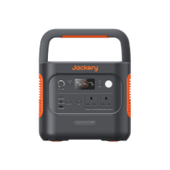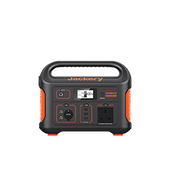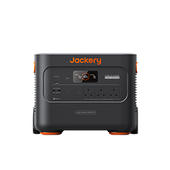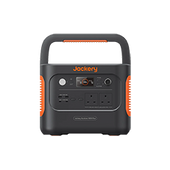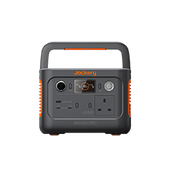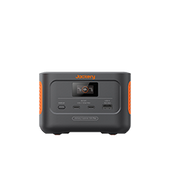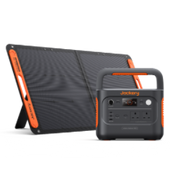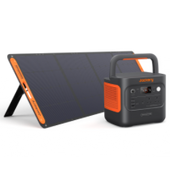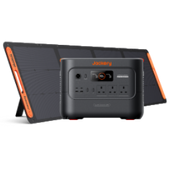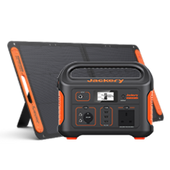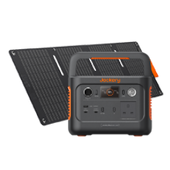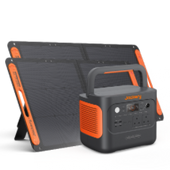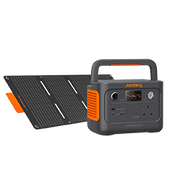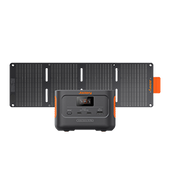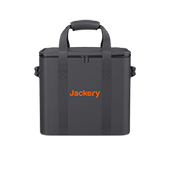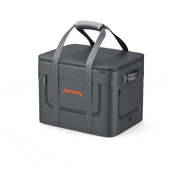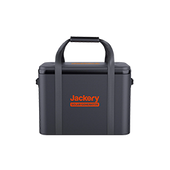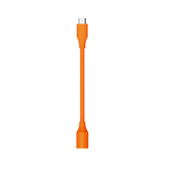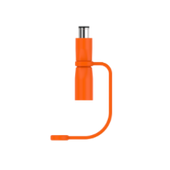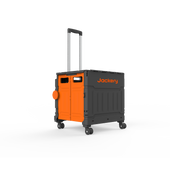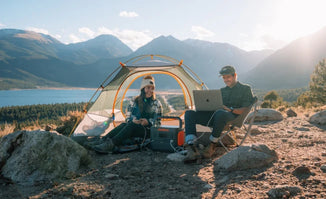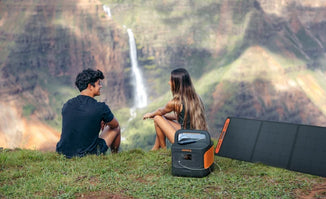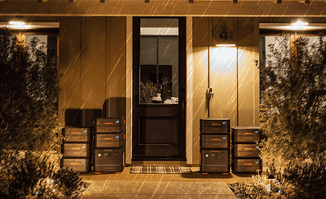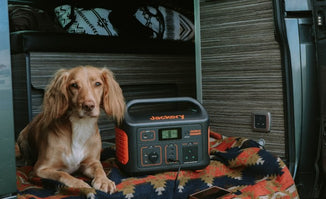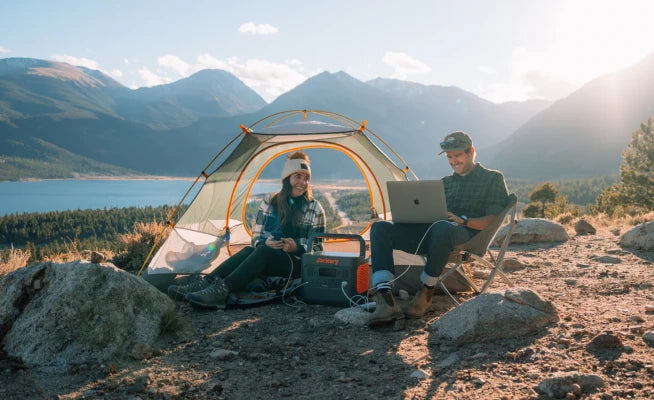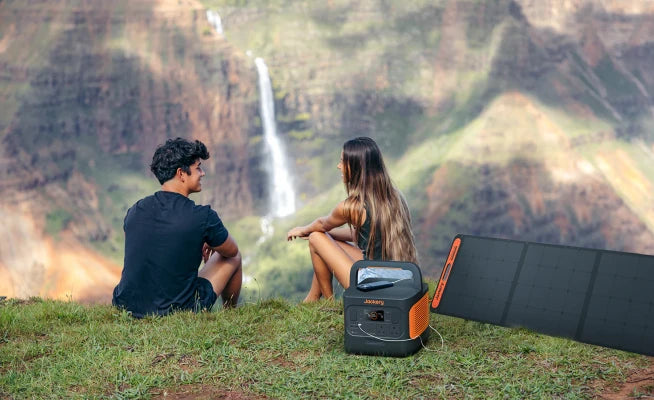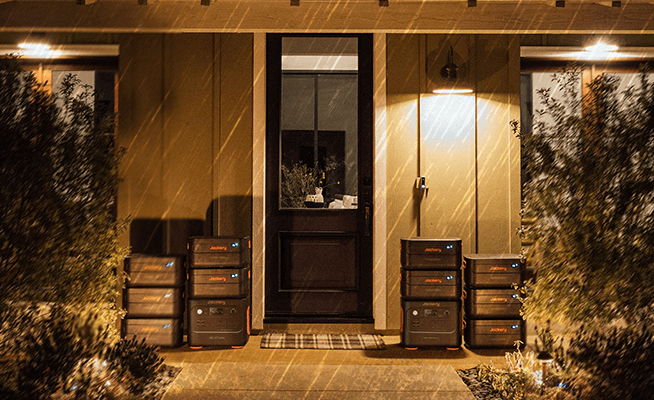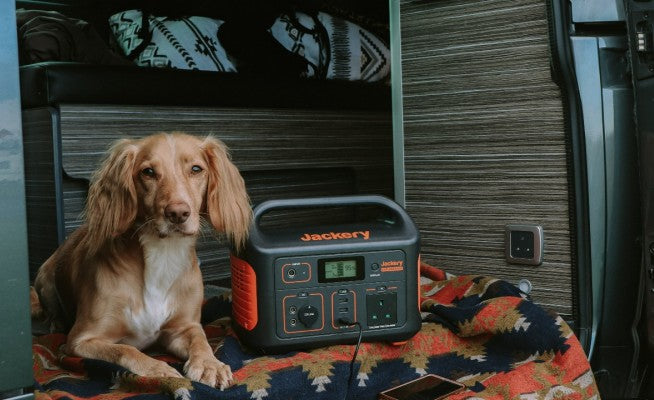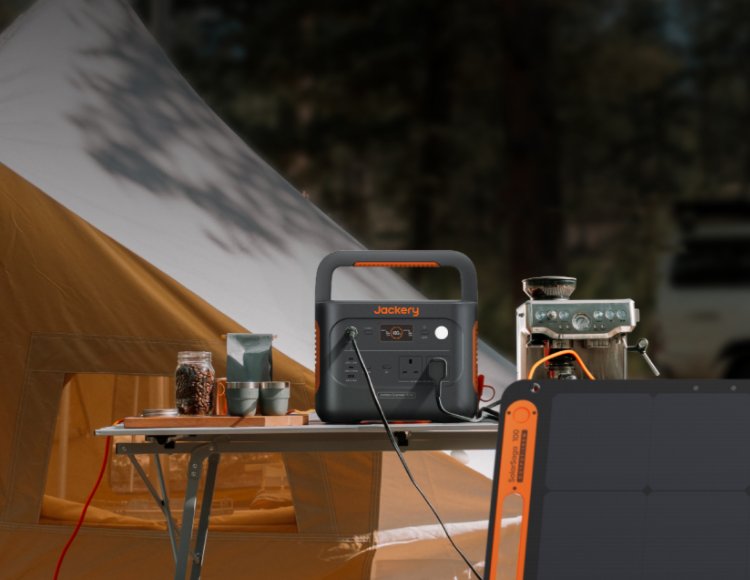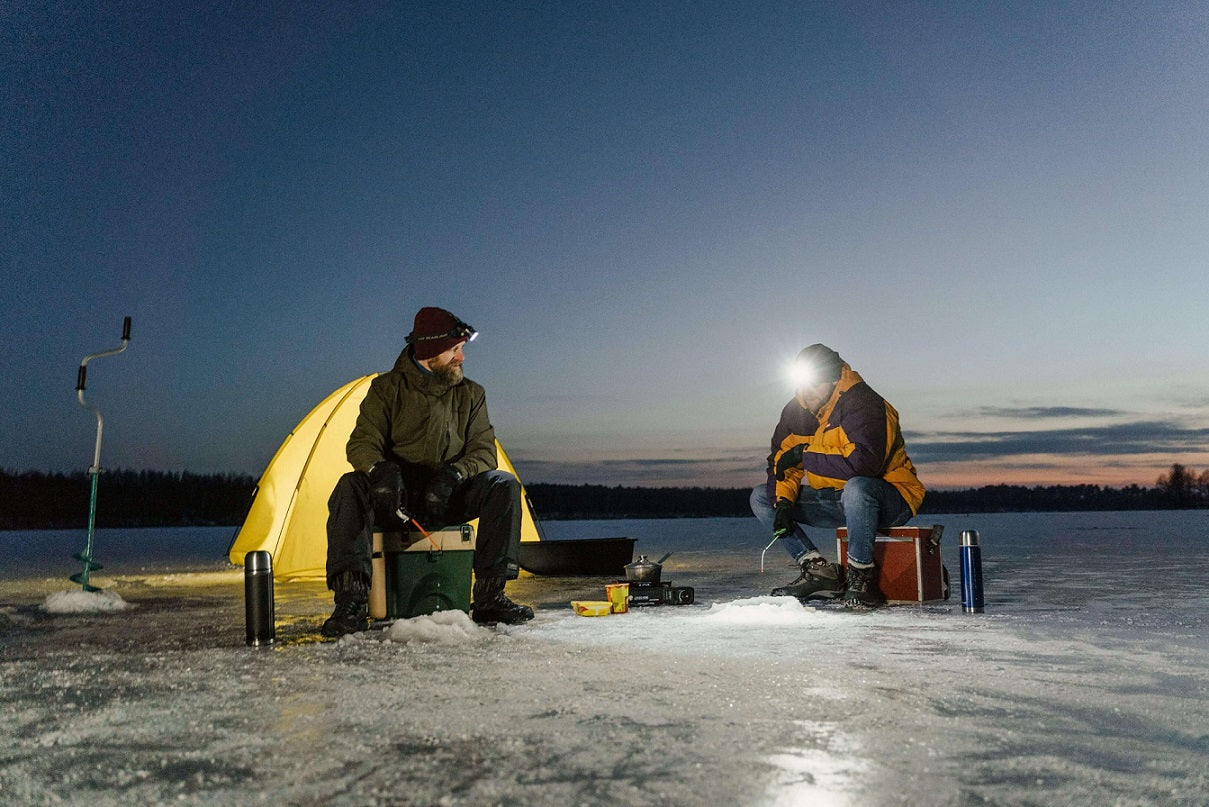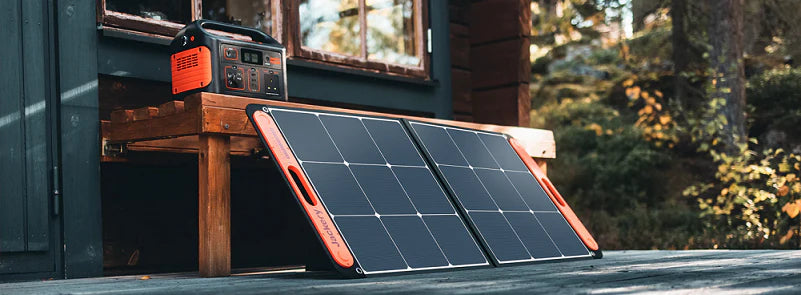Scotland is a paradise for camping enthusiasts, with rich natural landscapes and relatively relaxed outdoor activity regulations. In Scotland, you can camp in most wilderness environments and non-enclosed land. However, the premise of free camping is that you must follow responsible principles, including minimising your impact on the environment.
The best places to camp in Scotland include the Isle of Skye, Glencoe, West Highland Way, Outer Hebrides, Cairngorms National Park, Loch Lomond and Trossachs National Park. By reading this blog, you can gain valuable insights into wild camping in Scotland. Besides, while you're wild camping, having reliable portable power is essential to connect with others, navigate the route or even cook outdoors. We highly recommend the Jackery Portable Power Station for effectively powering your camping appliances.
Key Takeaways: |
- Wild camping is legal on most unenclosed land in Scotland. - When camping in Scotland, please avoid using campfires, pay attention to toilet hygiene, limit the size of your campsite, leave no traces, and do not stay too long. - The best camping sites in Scotland include Isle of Skye, Glencoe, West Highland Way, Outer Hebrides, Cairngorms National Park, Loch Lomond and Trossachs National Park. - Basic essential equipment for camping in Scotland includes tents, sleeping bags, camping lights, GPS equipment, first aid kits, and portable power stations. - When camping in Scotland, plan as much as possible, prepare for changeable weather, reduce noise levels and use environmentally friendly products. - It is essential to obtain a reliable power source when wild camping. We recommend Jackery Explorer 1000 v2 to power your camping appliances off the grid. |
Can You Wild Camp in Scotland?
Wild camping is about pitching a tent or camping in a natural or uninhabited area. Of course, wild camping also means there are no amenities nearby, such as mains electricity, running water, toilets or shops.
Therefore, when camping, it is essential to take all necessary items with you, including food, water, medicine, and emergency supplies. Additionally, you should verify whether wild camping is permitted at your destination. Here is some information about whether you can camp wild in Scotland:
Is Wild Camping Legal in Scotland?
In short, wild camping is legal in Scotland. Wild camping is permitted on most unenclosed land in Scotland, thanks to the introduction and implementation of the Scottish Land Reform Act in 2003. Of course, people who camp wild in Scotland must respect the countryside and take responsibility for their camping style and safety.
Although the law regarding wild camping has changed in recent years, wild camping remains legal in Scotland. According to the Scottish Outdoor Access Code, everyone has the right to access Scotland's outdoor spaces, including forests, lakes, beaches and rivers, as long as they act responsibly.
In Scotland, you can camp wild in most wilderness environments and unenclosed land (including open moorland, forests, fields and some coastal areas). However, this is subject to the principle of responsible camping, which includes minimising your impact on the environment, respecting local communities and leaving no trace.
Do You Need a Permit to Wild Camp in Scotland?
Generally, you don't need a permit to wild camp in Scotland. However, there are certain areas or times when a license is required. You need a permit to wild camp in managed camping areas during specific periods; otherwise, you may be subject to a fine. For example, you need a license to wild camp in particular locations in Loch Lomond and the Trossachs National Park between March and September.
Where Can't You Wild Camp in Scotland?
For camping enthusiasts, most places in Scotland are suitable for wild camping, but there are some restrictions. Here are some areas where you can't wild camp in Scotland:
Enclosed Land: Camping is prohibited on enclosed farmland, arable land or land around houses unless you have the explicit permission of the landowner.
Sensitive Areas: You should also avoid camping in sensitive areas such as nature reserves, military regions and specific protected sites.
Close to Roads or Buildings: You can't camp near any buildings, main roads or historical sites.
Rules to Follow When Wild Camping in Scotland
While most outdoor enthusiasts enjoy a certain freedom when wild camping in Scotland, it also comes with a set of challenges and responsibilities. There are several guidelines and rules to follow for a positive and sustainable outdoor experience.

Rule 1: Set Up Your Campsite Correctly
When setting up your campsite, in addition to avoiding closed farmland or fields where livestock gather, choose a site at least 200 metres away from houses, buildings, and roads. If your camping destination is already crowded, consider relocating to another site to avoid overcrowding and minimise the potential for greater ecological impact or damage.
Rule 2: Avoid Campfires
One of the basic rules of camping in Scotland is that open fires are prohibited, which protects the environment from the risks associated with open fires and preserves the natural landscape. In particular, fires should not be lit during the dry season or in sensitive areas such as forests or peatlands. Campers are encouraged to use lightweight camping stoves instead of campfires when cooking or requiring additional heat.
Where fires are permitted, follow local fire safety guidelines to ensure the fire is controlled correctly and safely extinguished.
Rule 3: Pay Attention to Toilet Hygiene
When camping in Scotland, the correct disposal of human waste is a strict rule that must be followed. It is best to use a portable toilet or bury it at least 15cm deep and at least 30 metres away from a water source. Then, be sure to pack up any used hygiene items, such as toilet paper and wet wipes.
Rule 4: Don't Stay Too Long
Although camping provides an opportunity to get close to nature, it is best to avoid building permanent structures or camping in the same place for an extended period. It is recommended not to stay at the same camping site for more than three nights. Regularly changing camping sites can help spread the ecological load and prevent overexploitation of natural wilderness areas.
Rule 5: Keep the Size of the Camping Site Small
When camping, small groups are usually less impactful on the environment and easier to manage. Larger camping groups may have a greater impact on the environment and may disturb others. Additionally, it is advisable to obtain permission from local authorities when camping with large groups. Obtaining appropriate group camping permits is a manifestation of responsible and considerate outdoor activities.
Rule 6: Leave No Trace
When camping in Scotland, always follow the principle of "leave no trace" to minimise your ecological footprint. Leave the campsite as you find it, which means carefully cleaning up and removing rubbish without destroying any vegetation or disturbing wildlife. If you see food wrappers, food scraps, or other trash discarded by others, please take it away as well.
Perfect Locations for Wild Camp in Scotland
Scotland is a paradise for camping enthusiasts, boasting magnificent natural scenery and a wealth of outdoor resources. From lakeside to the coast and mountains, Scotland has countless excellent camping spots to choose from. Here are the recommendations for the best Scottish camping spots:

Isle of Skye
Located on the west coast of Scotland, the Isle of Skye is one of the best camping spots in Scotland. On Skye, the Fairy Pools and Glenbrittle are famous camping spots. Campers here can also enjoy adventures such as hiking through the famous Cuillin Mountains or climbing Stour Head. However, the weather on Skye is unpredictable, so please prepare the right waterproof equipment and navigation in advance.
Glencoe
Glencoe is one of Scotland's most famous valleys, renowned for its steep peaks and rich history. You can choose to camp near the valley, allowing you to enjoy the magnificent mountain scenery under the stars at night. Among them, Lost Valley is a popular camping destination in Glencoe. In addition to camping, it is also a paradise for hiking, rock climbing and canoeing enthusiasts.
However, ensure you have sturdy, waterproof equipment and the necessary skills to navigate steep terrain.
West Highland Way
The West Highland Way is one of Scotland's most popular long-distance hiking routes. There are many camping spots along the way, especially near Loch Lomond. The eastern shore of Loch Lomond and Rannoch Moor are the most popular camping spots for campers.
However, open fires are prohibited in the lakeside area, so consider bringing a camping stove.
Outer Hebrides
The Outer Hebrides, a group of islands including Lewis and Harris, are renowned for their pristine white sandy beaches and crystal-clear waters. With remote and unspoiled natural scenery, campers can explore beautiful beaches, the Isle of Machar, and historical sites and enjoy the tranquil island scenery.
However, campers need to be prepared for strong winds and wet weather.
Loch Lomond and The Trossachs National Park
With its lakes, mountains and forests, Loch Lomond and The Trossachs National Park is a popular place for camping in Scotland. People can also enjoy kayaking between camping trips.
However, during the peak summer months, camping is only allowed in certain areas with a permit. Campers are also required to strictly follow the "Leave No Trace" principle to protect the environment.
Cairngorms National Park
The Cairngorms National Park has a rich and diverse landscape, including ancient Caledonian forests and highlands. Rothiemurchus Forest is a great place for campers.
However, please ensure you understand the seasonal restrictions and regulations here and camp legally and responsibly. During busy periods such as summer, camping permits may be required in some areas.
If you want to hike or caravan camp in Scotland, here are the guides:
Packing List for Wild Camping in Scotland
Scotland has a diverse terrain and a changeable climate. Camping requires keeping warm, protecting against rain and outdoor safety. The following is a list of equipment for different scenarios (for reference only). It is recommended to adjust the camping equipment according to actual needs:

Basic Equipment
The following are the basic essential equipment for all camping scenarios:
Tent: a four-season tent with strong wind and rainproof performance.
Sleeping Bag: a sleeping bag with a comfortable temperature scale of 0°C to -5°C.
Sleeping Pad: an inflatable pad or foam pad with an R-value of ≥2.5.
Backpack: a 50-70 litre backpack.
Lighting Equipment: headlamp, flashlight or camping light.
Navigation and Communication Equipment: GPS device, offline map, compass, walkie-talkie, and satellite phone.
Multi-Function Tool: Swiss Army knife, rope, engineer shovel, lighter + matches.
First Aid Kit: a first aid kit containing common medicines and first aid supplies.
Portable Power Station: Jackery Explorer 1000 v2 Portable Power Station.
Clothing and Protective Equipment
The following are the clothing and protective gear suitable for all camping scenarios:
Waterproof Jackets and Pants: Gore-Tex or similar waterproof jackets and pants.
Warm Mid-Layer: down or synthetic jacket.
Quick-Drying Underwear: wool or synthetic quick-drying underwear.
Hiking Pants: removable or quick-drying hiking pants.
Waterproof Hiking Shoes: High-top Waterproof Hiking Boots.
Spare Socks: multiple pairs of wool socks.
Sanitary Products: wet wipes, toiletry bag, garbage bag.
Sun Protection Products: Sun Hat, Sunglasses, Sunscreen.
Mosquito Repellent Products: Mosquito Spray, Insecticide.
Food and Cooking Equipment
The following are food and cooking equipment suitable for all camping scenarios:
Stove: gas cylinder stove.
Cooking Utensils: lightweight pots.
Tableware: titanium cups, tableware sets.
Water Utensils: 1-2 litre water bags or bottles, water purification tablets or filters.
Food: high-energy snacks (energy bars, chocolate, beef jerky), dehydrated meals, tea.
Other Practical Equipment
In addition to the basic equipment and items above, you may also use the following practical equipment when camping in Scotland:
Camping permit
Cash/change
Plastic bag or waterproof bag
Spare shoes/sandals
Folding chair
Hiking pole

Jackery Portable Power Station for Wild Camping
Wild camping in Scotland offers incredible natural beauty and solitude, but it also means being entirely off the grid. A Jackery Portable Power Station can be an excellent choice to meet your power needs in this environment.
Unlike traditional petrol generators, Jackery Portable Power Stations operate silently and produce no emissions. This is crucial for maintaining the tranquillity of the Scottish wilderness and respecting other campers and wildlife. Generators are generally frowned upon for wild camping due to their noise and fumes.
Jackery Portable Power Stations, especially when paired with Jackery Solar Panels, utilise renewable energy. This aligns perfectly with the "Leave No Trace" principles of wild camping in Scotland, minimising your environmental impact. Here, we recommend Jackery Explorer 1000 v2 for your wild camping.
Jackery Explorer 1000 v2
The Jackery Explorer 1000 v2 is an excellent choice for wild camping in Scotland due to its impressive balance of capacity, power output, portability, and advanced features.

1070Wh LiFePO4 Battery: This substantial watt-hour (Wh) capacity means it can power a wide range of devices for an extended period. For wild camping, this translates to multiple charges for phones, headlamps, cameras, drones, and GPS devices. It can even handle a portable cooler or a low-wattage camping kettle, making your off-grid experience much more comfortable.
The 1000 v2 utilises LiFePO4 (Lithium Iron Phosphate) batteries, which are known for their longevity and safety. They offer a much longer cycle life (4000 cycles to 70%+ capacity) compared to older lithium-ion chemistries, meaning the unit will last for many years of adventurous trips.
1500W AC Output (3000W Surge Peak): This continuous output allows you to run more power-hungry devices than smaller power stations. While you won't be running a full-size fridge, you can easily power items like a camping stove (if under 1500W), a small blender, or even charge a laptop efficiently. The 3000W surge capability handles the initial power spike of certain appliances.
Lighter and More Compact: Weighing around 23.8 lbs (10.8 kg) and measuring roughly 12.87"L x 8.82" W x 9.72" H (32.7 x 22.4 x 24.7 cm), the Explorer 1000 v2 is noticeably lighter and more compact than its predecessor (the original Explorer 1000) and many comparable capacity power stations. This is a significant advantage for wild camping, where every pound counts, especially when hiking in a remote location.
Rapid AC Charging: The 1000 v2 can be charged from 0% to 100% in as little as 1 hour with "Emergency Super Charging" activated via the Jackery App (defaults to 1.7 hours for optimised battery health). This means you can quickly top it up before heading out. When paired with Jackery SolarSaga solar panels (sold separately), you can recharge the unit entirely off the grid. With two SolarSaga 100W panels (200W total), it can be recharged in approximately 7.5 hours. With two SolarSaga 200W panels (400W total), it can be recharged in approximately 3.8 hours. This is vital for extended stays in the Scottish wilderness where grid power is unavailable.
Smart App Control: The Jackery App allows you to monitor battery status, adjust charging modes (including a quiet overnight mode with a noise level of less than 30 dB), and remotely manage power usage via Wi-Fi or Bluetooth. This provides greater control and optimisation. With noise levels at less than 22dB, it's exceptionally quiet, which is essential for maintaining the peaceful atmosphere of a wild camping experience.












① 1070Wh Capacity & 1500W Output: Powerful Power Output for your ultimate Outdoor Freedom
② Emergency Super Charging: Up to 7x Faster¹, Full Charge in as Fast as 1 Hour
③ Whisper-Quiet Operation Under 22dB² for Peace and Serenity
④ Ultra-Durable & Reliable LiFePO4 Battery for 4000 Cycles up to 10 years daily use
⑤ Exclusive ChargeShield 2.0™ Battery Technology: Multiple Reliable Certifications, 62 Layers of Protection
⑥ Reliable Power Anytime: UPS ≤20ms, Seamless Power Switching, IEC 62040 Certified
⑦ The Smallest and Lightest³ 1 kWh LFP Power Station: 18% smaller than the old version Explorer 1000 Certified
Top Tips for Wild Camping in Scotland
Scotland is a paradise for camping enthusiasts, boasting magnificent natural scenery and an abundance of rich outdoor resources. However, its changeable climate and unique ecological environment also require special attention. Here are some tips and best practices to follow when wild camping in Scotland:

Tip 1: Plan and Prepare in Advance
If you have a designated camping site, please plan and prepare in advance, especially during the peak season (May to September), when traffic is high. Make a route plan first, including marking water sources, emergency shelters and signal coverage areas.
Tip 2: Deal with Changeable Weather
The weather in Scotland is unpredictable, so it is essential to prepare for it. Please pay attention to the mountain-specific forecast of the MET Office (https://www.metoffice.gov.uk/). Essential waterproof equipment includes jackets, quick-drying underwear, and waterproof tents. Even in summer, the temperature at night may drop to single digits.
Tip 3: Reduce Noise Level
One of the most critical points in camping etiquette is to keep the noise level to a minimum, especially at night. In an open environment, sound can travel a considerable distance, making it easy to disturb the surrounding wildlife and other campers.
Tip 4: Respect Wildlife
When camping in Scotland, maintain a safe distance from wild animals and refrain from any behaviour that may disturb them or their habitats. Additionally, refrain from feeding wild animals and keep your food out of their reach.
Tip 5: Mosquito Protection
Midges are rampant in the Scottish Highlands from May to September. It is best to carry insect repellent containing DEET or consider using an insect repellent head net, such as a Midge net. Deer ticks, which can carry Lyme disease, are also found in certain outdoor regions of Scotland. During camping, if you find a tick on your body, use the correct tick removal method to remove it immediately.
Tip 6: Use Environmentally Friendly Products
Try to use reusable items when camping and avoid disposable products. Additionally, opt for environmentally friendly products that have a minimal impact on the natural environment, such as sunscreen, soap, shampoo, insect repellent, dishwashing liquid, and toothpaste.
FAQs
The following are the frequently asked questions about wild camping in Scotland.
1. Is it legal to wild camp in Scotland?
Yes, wild camping is generally legal in Scotland, but it must be done in a responsible manner and accordance with the Scottish Land Reform Act. When wild camping in Scotland, you must respect the environment, minimise your impact on it and avoid camping in certain areas, such as enclosed fields or near buildings.
2. Can you park and sleep anywhere in Scotland?
In Scotland, overnight camping is generally permitted in designated parking areas and car parks, provided you do not block access and there are no signs prohibiting overnight parking. Alternatively, you can pitch your tent next to your car and camp. However, this requires that there are no signs prohibiting parking and that you do not restrict access. You are advised to check local road traffic regulations to ensure your actions comply with the law.
3. Is it legal to camp on the beach in Scotland?
Wild camping is permitted on Scotland's beaches. However, there are some things to be aware of when camping on a Scottish beach. For example, make sure you, your tent and all your belongings are above the tide line when you sleep at night. Also, be considerate of other beach users, especially local wildlife, when camping on the beach, and refrain from defecating on the sand.
4. How to be a responsible camper?
Generally, following the "Leave No Trace" principle is enough to be a responsible camper. A qualified camper will also pay attention to the following aspects:
Use reusable items
Choose environmentally friendly products
Dispose of garbage properly
Respect wildlife
Consider camping sites
Final Thoughts
Scotland allows you to pitch a tent on almost any uninhabited land and camp there legally overnight. Whether you prefer mountains, lakes, beaches, or forests, Scotland offers an excellent camping experience. However, while allowing free camping, Scotland emphasises respect for nature. When wild camping in Scotland, please avoid using campfires, pay attention to toilet hygiene, control the size of your campsite, leave no traces, and do not stay too long.


